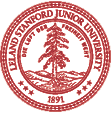









Some Thoughts on Advising Graduate Students
I believe that PhD students should take a major role in formulating their PhD research topics. An essential part of PhD training is figuring out what’s worth doing, how to do it, and bringing it to completion. My fondest hope is that by the time my PhD students are done, they will have taught me a bunch of stuff I didn’t know before. I’ve been fortunate enough that most of my grad students have fulfilled that hope. I don’t run a big lab, I don’t have postdocs, and I’m not a micromanager, so students who are happiest as my advisees are self-starters who enjoy working with group members who aren’t working on exactly what they are. That said, I have a scheduled weekly meeting with each student so they can get advice and I can get my intellectual batteries recharged by talking to them about their research.The most successful of my students have been those who took advantage of the expertise of some of the other faculty in the School of Earth Sciences, as well as mine. These faculty include Elizabeth Miller (tectonics and extensional magmatism), Joe Wooden (U-Pb geochronology, radiogenic isotopes), Mike McWilliams (40Ar/39Ar geochronology), Norm Sleep (quantifying anything you can think of), Dave Pollard and Paul Segall (rock mechanics and structural geology as applied to volcano deformation), Don Lowe (after all, volcanology is just hot and fast sedimentology), and Marco Einaudi (ore deposits, now Emeritus). We’ve also recently started collaborating with faculty in the Archaeology Program: Ian Hodder, Ian Morris, and John Rick. One of the nice attributes of Stanford is that, for the most part, the barriers to graduate students working between faculty and between departments are low.
Some of the best field-based igneous petrologist and volcanologists in the world are employed at the U.S. Geological Survey just a 10-minute drive away in Menlo Park. These include Charlie Bacon, Mike Clynne, Julie Donelly-Nolan, Wes Hildreth (my spouse), David John, Jake Lowenstern (a former student of mine and now the Scientist-in-Charge at the Yellowstone Volcano Observatory), and Tom Sisson, as well as some retired but still-active people (Bob Christiansen, Pete Lipman, Jim Moore, Pat Muffler). Although they don’t supervise students directly, they can provide a wealth of expertise about volcanoes, including the Cascades and Aleutian chains, Long Valley and Yellowstone calderas, Tertiary calderas of the Great Basin and the Rockies, and Hawaii, and about magma chamber processes and the granites that are left behind.
Your Colleagues
In deciding where to go to graduate school, one of the most important criteria is the quality of your fellow graduate students. The faculty are important, but you’ll learn as much or more from your fellow graduate students. After all, they are the ones you’ll be spending your time with at 2 a.m., running a mass spectrometer or printing out a conference poster. I hope you’ll look at the web pages of current grad students at Stanford, both mine and others, to get a sense of what they are doing. And if you visit Stanford, make sure to make time to talk to a range of graduate students so you get a balanced view of the department and school.
A good predictor of whether you’ll be satisfied with your graduate education is whether your PhD advisor has a track record of placing students in the types of jobs you imagine yourself holding once you graduate. In that spirit I offer a list of my advisees through the years.
Brent Turrin
Clark Johnson
Pat Dobson
Horacio Ferriz
Steve Novak
Chris Fridrich
Anita Grunder
Tom Frost
Peter Wallmann
Betsy Moll-Stalcup
Phil Gans
Dave Boden
Jenny Metz
Paula Cornejo
George Nibler
Susan DeBari
Jake Lowenstern
Liz Warner-Holt
Tamara Lowe
Cheryl Gansecki
Josh Ring
(M.S. 1984)
(M.S. 1984)
(M.S. 1984)
(PhD 1984)
(PhD 1985)
(PhD 1986)
(PhD 1986)
(PhD 1986)
(MS 1986)
(PhD 1987)
(PhD 1987)
(PhD 1987)
(PhD 1987)
(MS 1990)
(MS 1991)
(PhD 1991)
(PhD 1992)
(MS 1994)
(PhD 1996)
(PhD 1998)
(MS 2000)
Professor, Rutgers University
Professor, University of Wisconsin, Madison
Scientist, Lawrence Berkeley Laboratory
Professor, California State University, Stanislaus
Scientist, Charles Evans and Associates
Geologist, U.S. Geological Survey
Professor, Oregon State University
Geologist, U.S. Geological Survey
Deceased
Freelance writer, formerly Geologist, U.S. Geological Survey
Professor, University of California, Santa Barbara
Science writer and freelance mineral resources geologist
Scientist, Charles Evans and Associates
Geologist, Chilean Geological Survey
Technical writer, Liquid Communications Group
Associate professor, Western Washington University
Geologist, U.S. Geological Survey
?, followed spouse to CalTech, where she completed a PhD
Computer systems analyst, SUNY Albany
President, Volcano Video Productions
Science teacher at private high school